If you spot a bug with tiny pincers at the tail part, you got it. Earwigs can be easily identified by two pincers on their rear part.
Earwigs use these tiny pincers to keep predators away. Earwigs in the US typically range in size from 1/4 inch to 1 inch (6 to 25 mm) in length, depending on the species. The European Earwig, one of the most common species, usually falls within this size range. If there is an earwig infestation in your yard or attic, don’t hesitate to get help from professional earwig treatment services.
Earwigs appear to be predators given their sharp pincers but earwigs are omnivores and have a varied diet. They eat a range of plant material, including leaves, flowers, fruits, and stems.
They also consume decaying organic matter and other insects, both dead and alive. Indoors, they might feed on household plants, decomposing matter, and occasionally other small insects or crumbs. They do not feed on human blood but can be harmful to your garden.
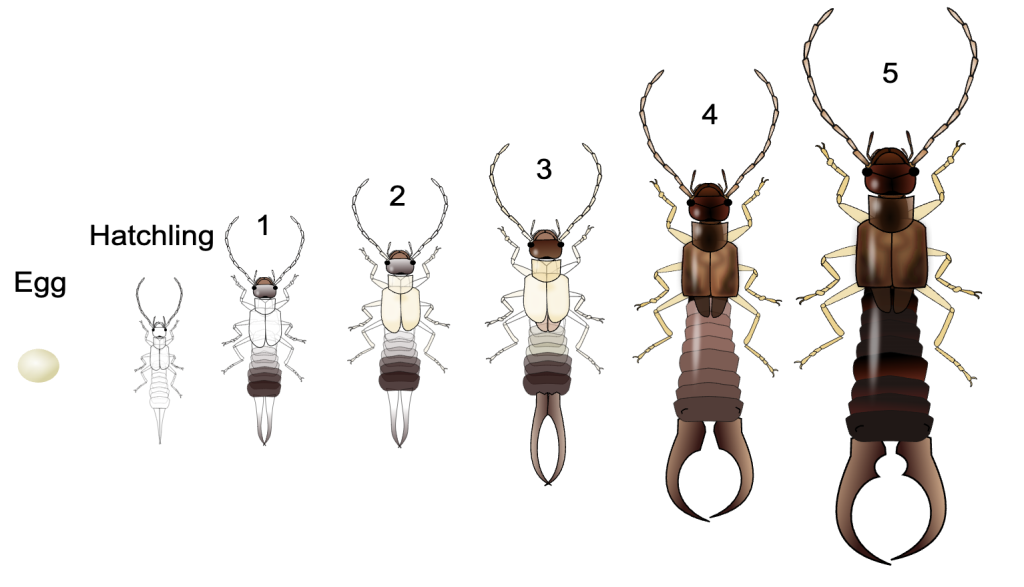
Earwigs go through three main stages: egg, nymph, and adult. Females lay 20 to 80 eggs in soil, guarding them until they hatch in about a week. The young nymphs look like small adults but are lighter and lack full wings and pincers. They molt several times over weeks or months, gradually becoming adults. Adult earwigs are darker, have full wings (though they rarely fly), and live for several months to a year, favoring dark, damp places and being most active at night.
In America, several types of earwigs can be commonly found. These earwigs vary in habitat preferences and physical characteristics, but they all share typical earwig traits like pincers and nocturnal habits. The most notable ones include:
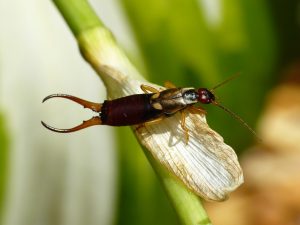
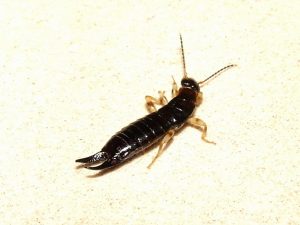

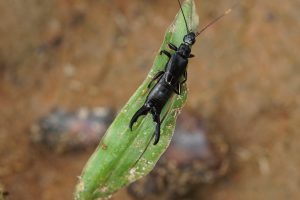
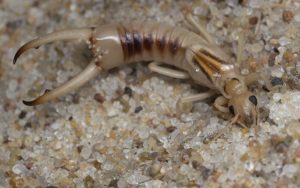
You can use DIY methods to get rid of earwigs at you home. To get rid of earwigs using DIY methods, you can create and apply various homemade solutions. One effective approach is to mix 70% rubbing alcohol with water in a spray bottle and spritz it directly on earwigs, which kills them on contact.
Another option is to make a dish soap and water solution, which can be sprayed in areas where earwigs frequently appear, such as around baseboards, window sills, and other entry points. This solution disrupts their cellular structure, leading to their death.
Additionally, a mixture of water and white distilled vinegar can be used to spray surfaces. Earwigs are repelled by the scent of vinegar, and this solution also serves as an effective cleaner for areas where they have been spotted, helping to remove any lingering pheromones that might attract more earwigs. If these methods don’t work and the infestation is intense, contact professional earwigs exterminators.
No, Despite their name, earwigs do not typically crawl into people’s ears. The name “earwig” is derived from an old superstition and a mistranslation of the Old English word “ēarewicga,” which means “ear creature.” In reality, earwigs prefer dark, damp environments such as under rocks, logs, or in soil.
While it’s possible for an earwig to accidentally crawl into an ear, it is extremely rare and not something they seek out. If you think you have spotted an earwig infestation, relax and connect with an expert earwig control service.
The name "earwig" is derived from an old superstition and a mistranslation of the Old English word "ēarewicga," which means "ear creature."
Earwigs are attracted to moisture. Just like many insects that prefer humid and moist environments, earwigs are also attracted towards damp, humid and dark environments.
Earwigs can be repelled by soapy water, a mixture of alcohol and water. Additionally, Installing some repellent plants is a great idea. You can use peppermint, garlic, bay leaves, or wormwood. These plants will keep earwigs away. If you are suddenly finding many earwigs in your home, it might be an earwig infestation, contact earwig exterminators to handle it professionally.
No, due to their appearance and pincers they may seem harmful but they are not a direct threat to humans. Earwigs do not suck blood or bite us. Earwigs, despite their name, do not enter the human ear or feed on human brain cells. However, they can be a threat to your home and garden.
The best earwig killer is Vinegar. However, these DIYs are useful on a smaller scale. If there is an intense earwig infestation at your home or garden, get help from earwig control and management services.
No, earwigs are not poisonous and cannot kill you. Some types of earwigs can release a bad smell when they feel threatened, but this smell is not harmful. Earwigs are not toxic to people or pets.
Earwigs might come in contact with your body but do not intentionally crawl on you at night. They sometimes pinch, it only happens when they sense a threat.
To get rid of earwigs at home, fix any leaks and use dehumidifiers to keep your home dry. Mix 70% rubbing alcohol with water, or use a dish soap and water solution, and spray it where you see earwigs. Place damp rolled-up newspapers or cardboard tubes around your home. Check them daily and dispose of any trapped earwigs. Spray a mix of water and white vinegar in areas where earwigs are found, as they dislike the smell. Further, contact expert Earwig management service for your help.

Get your free pest control estimate today!